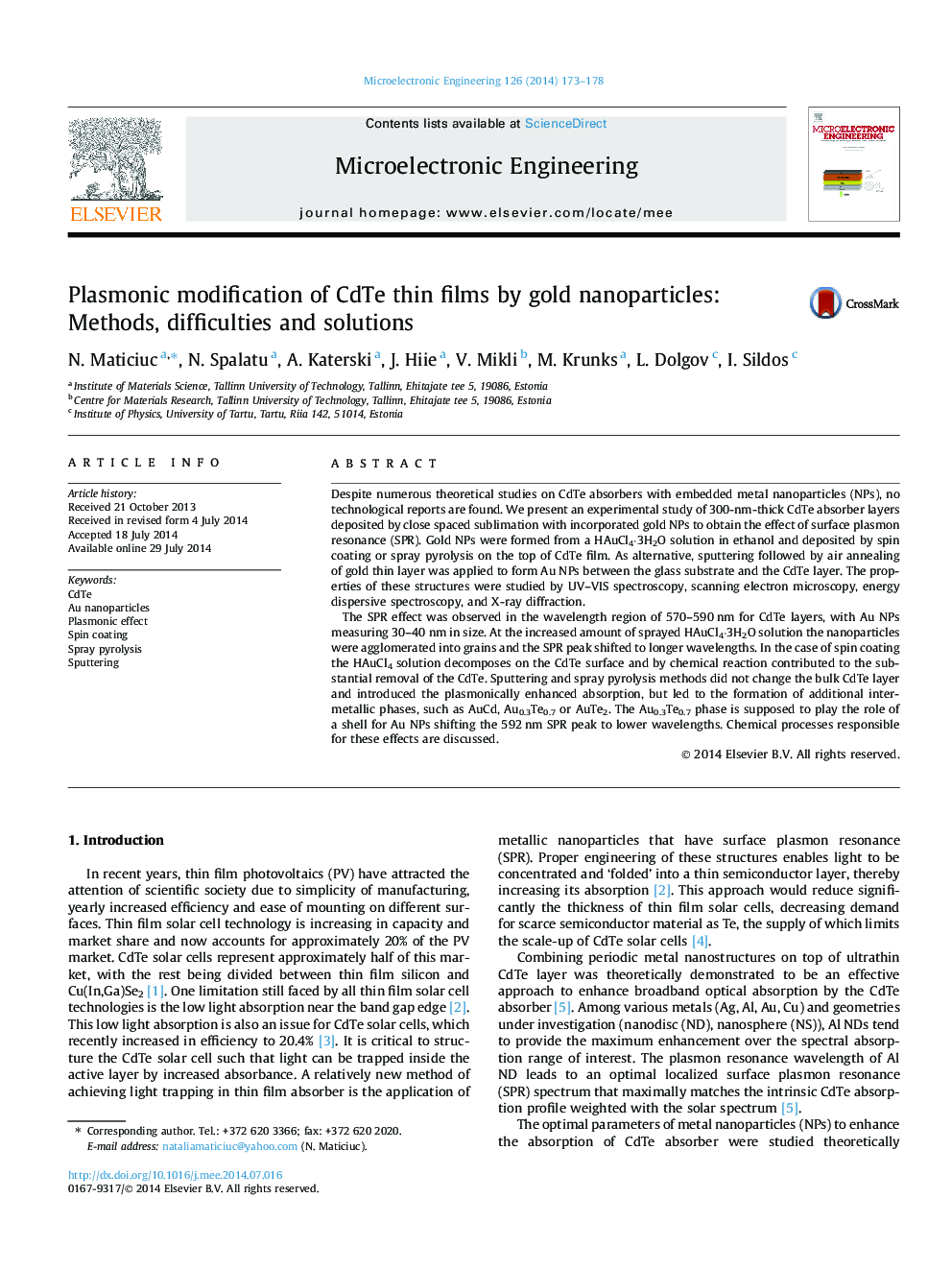| کد مقاله | کد نشریه | سال انتشار | مقاله انگلیسی | نسخه تمام متن |
|---|---|---|---|---|
| 539355 | 1450355 | 2014 | 6 صفحه PDF | دانلود رایگان |

• Au nanoparticles were incorporated into CdTe thin films by three methods.
• Spray pyrolysis and sputtering methods yield plasmonic effect in CdTe layer.
• Spin coated HAuCl4 solution and air annealing substantially remove CdTe layer.
• The processes between HAuCl4 and CdTe in the air heat treatment were analyzed.
Despite numerous theoretical studies on CdTe absorbers with embedded metal nanoparticles (NPs), no technological reports are found. We present an experimental study of 300-nm-thick CdTe absorber layers deposited by close spaced sublimation with incorporated gold NPs to obtain the effect of surface plasmon resonance (SPR). Gold NPs were formed from a HAuCl4·3H2O solution in ethanol and deposited by spin coating or spray pyrolysis on the top of CdTe film. As alternative, sputtering followed by air annealing of gold thin layer was applied to form Au NPs between the glass substrate and the CdTe layer. The properties of these structures were studied by UV–VIS spectroscopy, scanning electron microscopy, energy dispersive spectroscopy, and X-ray diffraction.The SPR effect was observed in the wavelength region of 570–590 nm for CdTe layers, with Au NPs measuring 30–40 nm in size. At the increased amount of sprayed HAuCl4·3H2O solution the nanoparticles were agglomerated into grains and the SPR peak shifted to longer wavelengths. In the case of spin coating the HAuCl4 solution decomposes on the CdTe surface and by chemical reaction contributed to the substantial removal of the CdTe. Sputtering and spray pyrolysis methods did not change the bulk CdTe layer and introduced the plasmonically enhanced absorption, but led to the formation of additional inter-metallic phases, such as AuCd, Au0.3Te0.7 or AuTe2. The Au0.3Te0.7 phase is supposed to play the role of a shell for Au NPs shifting the 592 nm SPR peak to lower wavelengths. Chemical processes responsible for these effects are discussed.
Figure optionsDownload as PowerPoint slide
Journal: Microelectronic Engineering - Volume 126, 25 August 2014, Pages 173–178